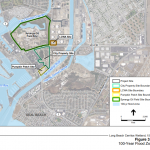Excellent article/overview of non-point-source pollution from Center for American Progress. Excellent data on types of pollution, EPA regulatory history (or lack of it),and an excellent case study of the Maumee River and its effect on Lake Erie: The Maumee River … Continue reading
Categories
- Agriculture
- Awards and Grants
- Climate
- Dam Removal
- Data
- Development
- Economics
- Edenville
- Education
- Endangered Species
- Energy
- Environmental Justice
- Forests
- Good News
- Groundwater and Soil
- Invasive Species
- Litorals
- LTPBR
- Markets
- Military
- Mining
- Ocean Floor
- Oceans
- Oil Spills
- Organizations
- Research Papers
- River Restoration
- Sea-Level Rise
- Stage Zero
- Technology
- Uncategorized
- Volunteers
- Wetlands




